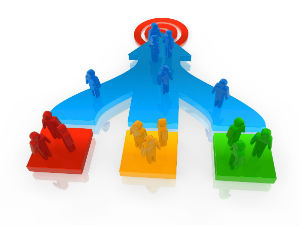Globalization and emergence of complex business requirements have forced organizations to consider HR more as a strategic business function rather than simply being relegated to the back office. Traditionally, the HR department’s functions were limited to providing support to the organization by dealing with contracts, benefits, leaves and recruitment. The department was usually located conveniently towards the lobby, so that potential candidates could easily submit their job applications. HR was also considered more as a liability than an asset for the company.
However, times have changed significantly and so has our understanding of HR functions. HR is now strategically involved in saving costs through a number of ways. The major expense in an organization is usually the payroll, which directly relates to manpower management, recruitment and resource utilization. HR can therefore be considered as a critical division that is strategically involved in saving money and obtaining a higher return on investment when hiring talent, negotiating contracts and benefits, creating policies that help retain employees and managing employee abuse of time and resources of the company. All these activities together save a huge amount of money.
Challenges for HR
Most companies now rely on HR not only to optimize the use of their most important asset – the employees, but also to sustain their business. The ideal HR department would function as a business partner, by hiring the best talent and creating a great workplace according to changing business trends.
Instead of simply doing transactional work, HR can contribute to the growth of the business by proactively determining what employees want from their job and understanding the key drivers to attract and retain employees. Today, HR’s major challenge is to proactively understand the changing needs of employees. While each customer of a company is considered unique, why is it so difficult to think of each employee as unique? Why are employees treated as one composite group and uniform policies are created for all the employees? The key challenge for HR therefore is to not only create fair policies but also be sensitive to the circumstances of each employee. Besides compensation, learning needs and recognition, three other areas that may continue to pose a challenge to HR in creating a better work environment include:
Freedom: A certain degree of space at the workplace attracts younger employees in droves. Companies like Google and Marriott acknowledge this fact and encourage open and transparent employee communication.
Flexibility: Flexibility at work is gaining momentum – employees are beginning to be hired on a contractual basis, typically for a particular project or when a specialized skill is required. Most European and American countries already follow this model.
Work boundaries: Work is more than just a means of livelihood. Many people spend the bulk of their time at the workplace, make friends there and are actively involved in their department’s success. HR can play an important role by finding common ground between organizational objectives and the life goals of an employee, thus creating a win-win environment.
Thus HR is an important thread between the employee and the employer and serves as a link between them in a manner that both the employee and the employer are happy.
One tool that can help HR play a more strategic role is our Empxtrack solution that empowers employees by allowing them to manage their own data and helps retain the best talent in the company. The Recruitment and PMS (Performance Management System) modules allows you achieve both these tasks respectively.









I quite like looking through a post that can make
men and women think. Also, thanks for allowing for me to comment!